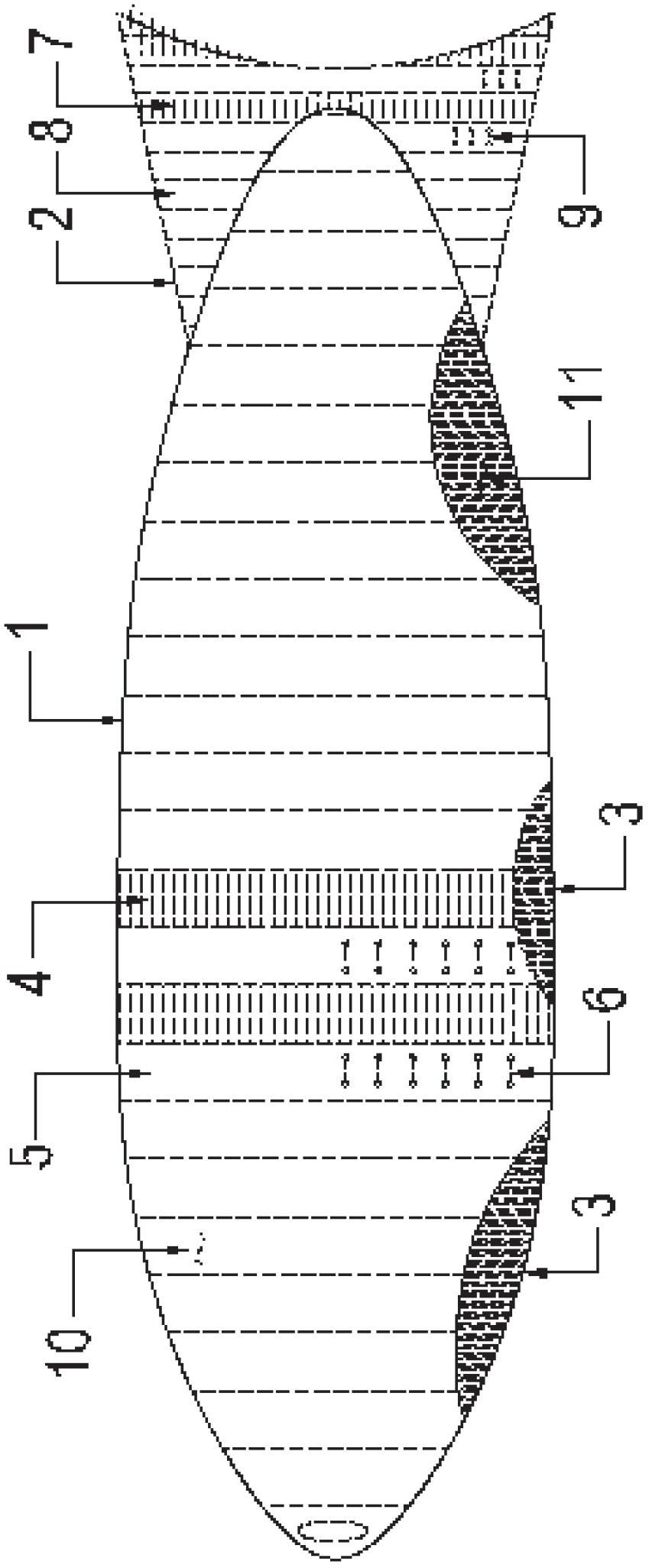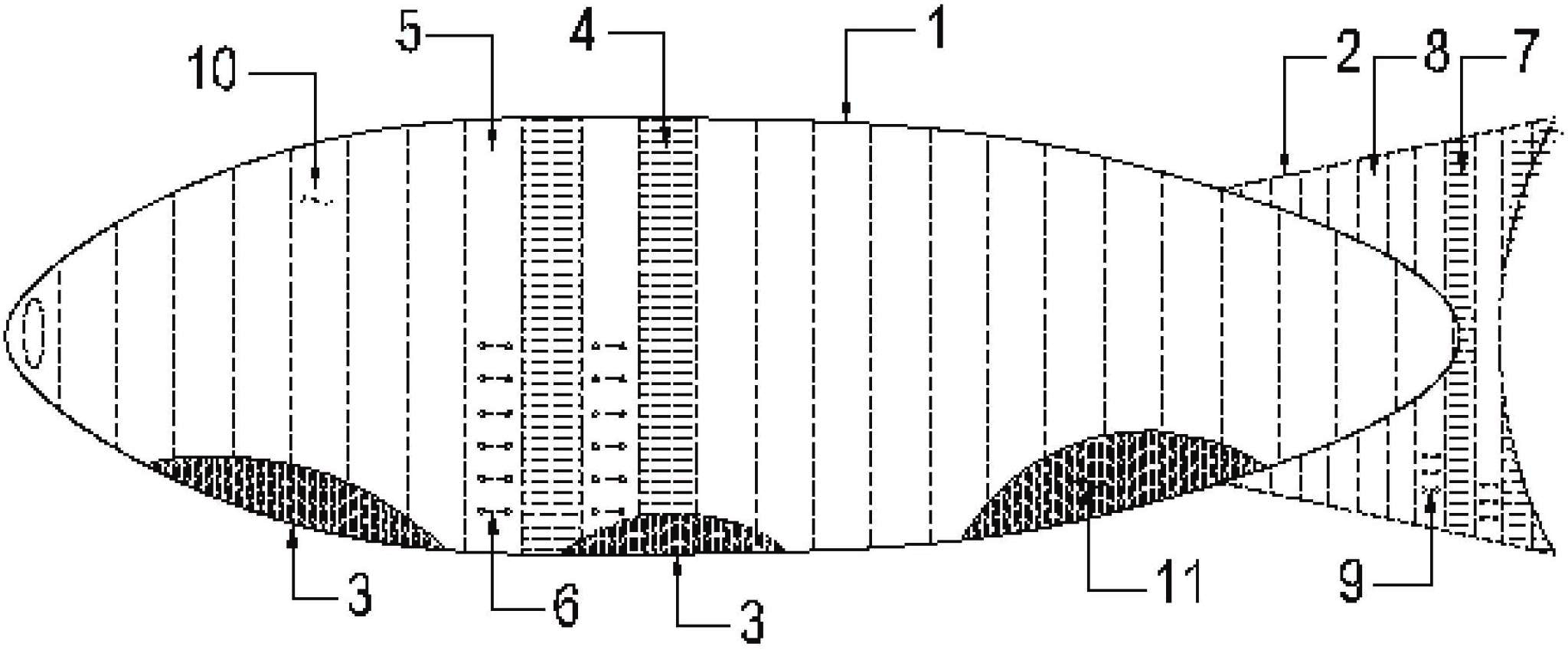Bionic fish type suspended aerostat for near space
An aerostat and near space technology, applied in the field of aerostat, can solve the problems of unstable shape during lift-off, difficult to control state transition, inconsistent efficiency matching points, etc., and achieve stable shape, large payload and low energy consumption. Effect
- Summary
- Abstract
- Description
- Claims
- Application Information
AI Technical Summary
Problems solved by technology
Method used
Image
Examples
Embodiment Construction
[0028] The technical solution of the present invention will be further described below in conjunction with the accompanying drawings.
[0029] figure 1 According to a preferred embodiment of the present invention, it is a bionic fish type near-space floating vehicle, and the figure shows a side view of the bionic fish near-space floating vehicle in a state of stable balance in the air. The figure shows the outer skin 1, the tail fin 2, the auxiliary airbag 3, the first hard rib 4, the first soft rib 5, the first film sensor controller 6, the second hard rib 7, the second soft rib 8, the second Thin film sensor controller 9, helium 10, air 11. As shown in the figure, the outer skin 1 includes a plurality of alternately connected first hard ribs 4 and second soft ribs 5 , and the shape of the outer skin 1 has low air resistance. Similarly, the caudal fin 2 includes a plurality of alternately connected first hard ribs 7 and second soft ribs 8 . The tail fin 2 is connected to t...
PUM
 Login to View More
Login to View More Abstract
Description
Claims
Application Information
 Login to View More
Login to View More - Generate Ideas
- Intellectual Property
- Life Sciences
- Materials
- Tech Scout
- Unparalleled Data Quality
- Higher Quality Content
- 60% Fewer Hallucinations
Browse by: Latest US Patents, China's latest patents, Technical Efficacy Thesaurus, Application Domain, Technology Topic, Popular Technical Reports.
© 2025 PatSnap. All rights reserved.Legal|Privacy policy|Modern Slavery Act Transparency Statement|Sitemap|About US| Contact US: help@patsnap.com


